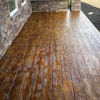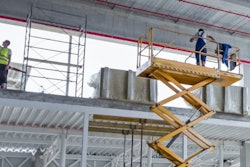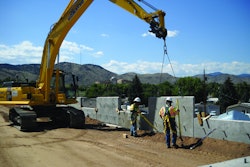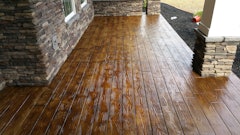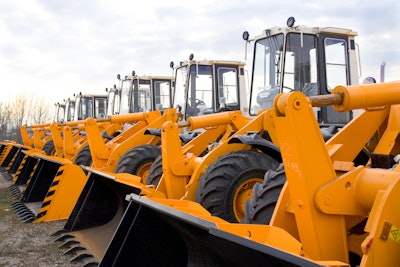
Way back when the computer was first introduced to the world, they were tools. They eventually became smaller, soon enough shrunk down to the size of an average room, then your desktop—eventually minuscule enough to fit onto your lap or your back pocket.
Throughout all this, there was always an intended function. Tools are meant to aid in work, and technology was developed to do the same. For construction, the management of owned and rented equipment can be a point of frustration. Spreadsheets with accounts, model numbers, due dates, maintenance schedules, and locations of where every tool is supposed to be can often be found in offices across the country. Oh, and let’s not forget the dry erase board (hopefully written in perfectly legible penmanship) or an entry in a notetaking app buried deep within your smartphone.
This doesn’t need to be. Technology was meant to make the complicated, simple. There’s no reason that the management of owned and rented tools and equipment needs to be a difficult task. Yet, “technologies have had such a bad name in construction because none of it’s been easy to use,” says Jason Perez, CEO of YARDZ. He recollects his time in the construction industry, back when he had to do training on modules every two weeks. “It felt like it was endless. And it was difficult,” he says.
 Jason Perez, CEO of YARDZYardz
Jason Perez, CEO of YARDZYardz
Offhand, he’s known as “The Wrangler.” Anyone in a similar role likely understands why.
“[One of] the big problems that we address is navigating the diversity of rental companies that [contractors] are doing business with and trying to keep their teams connected on what’s out there,” says Perez. Currently, he explains, there isn’t a tool to do that. Instead, contractors often need to log into five or more different portals only to copy and paste information from their own spreadsheets to send out to teams.
It’s steering this process where Griggs earned his moniker.
Take the telehandler for example. As one of the most common pieces of equipment on any project, the cost to rent can run around thousands a month. Once you start coordinating hundreds of projects, the costs can accumulate quickly. Meanwhile, the hour-labor cost involved in correcting any human error in handling complicated spreadsheets of copy/pasting data can also be expensive—let alone the time it takes to figure out where things went wrong and then correcting it.
American Shoring owns their major equipment needed for drilling concrete caissons, auger cast piles, and the like. When they rent, it’s mostly for forklifts and excavators—equipment that’s needed for every project but not every day. For instance, instead of renting a forklift for the entire time for a month-long job, Griggs finds it more cost-effective to do day rentals at the start and end of the job, using their owned cranes should material need to be moved between.
However, mistakes happen. Griggs tells of a situation when his team accidentally left a rented generator at a jobsite for four months before realizing it—and getting billed for it the entire time.
“It was already done. Everybody was off the site, and we were still getting invoices,” he says. Eventually, American Shoring’s billing department found the charges and brought them to Griggs’ attention. Luckily, since they don’t rent that much, they were able to easily locate the equipment. A similar situation with multiple projects at once with more rented equipment would likely require a much more complicated—and costly—remedy.
"It doesn’t matter whether you’re big or small, it’s that the resource shortage right now in construction has impacted people so much they have to get more done with less.”
—Jason Perez, CEO of YARDZ
If technology is meant to make things simpler, with their experience from being in the construction industry, Perez and partner Josh Schuyler saw this situation as an opportunity for technology to do just that. Founded in 2018, YARDZ is a technology platform that allows contractors to manage their rental and owned assets in one place. The construction tech company helps companies manage their inventory of both owned and rented equipment more efficiently.
The YARDZ tool helps companies better understand exactly what equipment they have in their inventory and where it’s located. This saves time and money by eliminating duplicate rentals; displaying all equipment contracts and their provisions; and ensuring that available equipment is sent to the jobs where it is needed most. While originally intended for construction companies and crews, it is adaptable to a wide range of vertical markets. Suppliers who use YARDZ can also build stronger relationships with contractors and gain more rental business. Flexible pricing and multiple product versions make YARDZ applicable for companies of all sizes.
Recently, they hired Westley Parks as the company’s chief operating officer (COO). Parks is a 35-year veteran of the equipment rental industry and the former COO of Neff Rental. There, he was an integral part of Neff’s growth and expansion, and eventual sale to United Rentals, where he served as a region vice president until early 2019. Before that, Parks began his career at Hertz Equipment Rental.
At the time of this writing, American Shoring has been using the YARDZ technology for three weeks.
Interface; Simplified
One of the biggest benefits of utilizing a single asset management technology is streamlining the process from a handmade and potentially very complicated format to something unified and simple. Perez explains that contractors had to use whiteboards and/or data from multiple platforms and then paste it to their own system—all to get a weekly overview of where assets are each week. “It was very laborious,” says Perez. The human-error factor will always be there but minimizing that as much as possible could greatly impact lost time as well as reduce unnecessary costs.
Their interface was designed to be as intuitive as possible. Each project has its own project number, and a dashboard uses intelligence to organize and present data with some easy-to-understand functions like location tracking, due dates, and more. As such, having all the equipment and tools a contractor owns and rents in a single, asset management, interactive technology can be an advantage for the contractor. But since contractors aren’t manually typing everything for each jobsite, Perez built intelligence in his technology that looks at all the assets and automatically lays them out in the project. “They’re not manually inputting this data, we’ve built intelligence to consume the data from all these different sources and land it within their account—landing it on the correct project,” he explains. The technology also tracks these assets as well as the financials.
According to a survey of their customers, contractors using YARDZ claimed that it saved them from 80-90% of the time spent managing assets. “What took them five days, is taking them one,” says Perez.
Forget Something? Notifications
It’s human nature. Both tools and equipment can be forgotten or misplaced at any time. “It’s not just owned, it’s the rented equipment that costs a lot every month,” says Perez. However, most people don’t realize they’ve lost something until it’s too late. On a short-term basis, remembering where one asset may work out just fine, but after a month with dozen or more, the challenge becomes exponentially more difficult to memorize. The intelligence built into the YARDZ technology was designed to simplify this process by prompts and easy-to-use solutions to connect the office to the field. “The idea is about connecting and facilitating the relationship between the field and the office—making it easier for the guys,” says Perez.
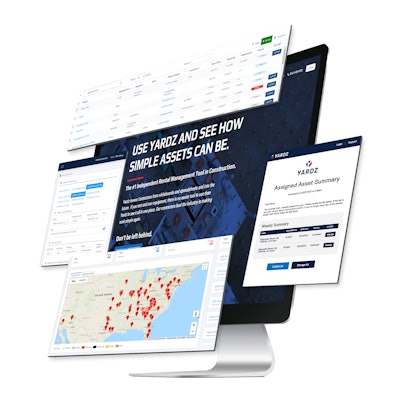 Yardz
Yardz
Perez tells of a small utility contractor with 25-30 assets in the system that started using YARDZ a couple of years ago. Because they only rent one or two things at a time and not very often, any alert to them is significant. If an excavator goes over an extra month, it could potentially cost up to an additional $7,000.
“The thing that we find is, it doesn’t matter whether you’re big or small, it’s that the resource shortage right now in construction has impacted people so much they have to get more done with less,” says Perez. YARDZ comes available with multiple subscription tiers; he explains that the majority of their customers are on the lower tier providing one to five seats to manage assets. However, contractors are able to enter their entire team for free.
Similar to how Griggs prefers to be as efficient as possible with the equipment American Shoring rents, Perez has noticed that his customers are both sending owned equipment back to their yard and sending back rented equipment. The technology includes an alert on the last day of rental.
Knowing the location of your equipment is one thing, knowing what type of service is due at certain mileage or hours run is another. Perez saw to it that the technology he presented to contractors would take the telematics already integrated and pair it with maintenance events. Prompts are color-coded.
It’s here where Griggs recognizes the potential for significant cost savings with the management of consumables in the maintenance program. After all, a fine-tuned machine runs more efficiently—essentially saving money in the long run by avoiding a pricey repair bill.
“This will help you definitely track [consumables] and see those on a day-to-day basis,” mentions Griggs. “It may not look like a lot right now, but six months or a year down the road, all those savings come in. You see them. And it’s clear, then.” In a feature that’s reportedly coming out later this year, they’re also interested in the ability to identify the cost of equipment (i.e. the purchase prices) and monitor the maintenance costs to see if that equipment is worth the investment. “Being able to identify what equipment is still making you money is a huge part of what attracted me,” says American Shoring owner and president Kelli Wilson.
Another feature of including the team into YARDZ is fully utilizing the reminder and notifications. Contractors can apply teams to projects and those individuals would receive alerts on the equipment rented, automated summaries, etc.
On the supplier or rental side, customers are able to segment out and manage vendors.
Perez sees YARDZ and the entirety of his company as two sides of the same coin: one professional and one personal. “The personal side is we are peace of mind, we’re a joy generator.” Professionally, since the company’s official launch in January 2019, Perez notes that during that time they have yet to lose a customer.
Aside from the technology product, it might be due to the company’s proactive customer service. “The support that YARDZ gives has been excellent,” comments Wilson. “As we’re getting used to entering things, and calling off rental equipment, we may not do it exactly right. And they’ll be calling me because they have seen that there may be an issue. They’ll call me to make sure that I understand what I’m doing…and want to make sure that their product is working.”
In a final note from YARDZ, the company states that they are always happy to provide a demo of their platform to those interested; a demo can be scheduled here.

